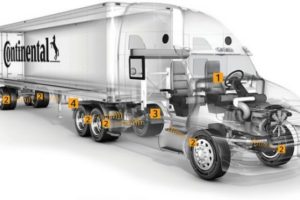When it comes to ensuring the safety and reliability of large trucks on the road, Electronic Verified Inspection Reporting (EVIR) stands out as a superior solution. Every year, the Federal Motor Carrier Safety Administration (FMCSA) records over half a million crashes involving large trucks, resulting in numerous fatalities and injuries. Shockingly, studies from the Insurance Institute for Highway Safety (IIHS) reveal that between 40% and 60% of these trucks involved in accidents have at least one mechanical violation contributing to the crash.
To address these safety concerns and regulatory compliance, pre- and post-trip inspections are a vital part of every truck driver’s daily routine. The Driver Vehicle Inspection Report (DVIR) has traditionally been the primary method for documenting these inspections. However, the limitations of DVIR and electronic DVIR (eDVIR) systems have become evident.
One of the most significant drawbacks of DVIR and eDVIR is the risk of paperwork getting lost, misplaced, or damaged. Even diligent drivers may forget to file their reports or misplace them, leading to maintenance issues going unnoticed. This inefficiency can pose serious safety risks on the road.
Enter Zonar EVIR®—the electronic verified inspection report (EVIR) system. Unlike traditional DVIR and eDVIR methods, Zonar EVIR inspections are truly verifiable, eliminating the possibility of “pencil whipping” the form or rushing through inspections, whether using commercial trucks or pupil transportation.
Zonar EVIR prevents drivers from skipping essential inspection steps, ensuring that no safety problems go unnoticed. Even minor issues that may not lead to accidents can be flagged during the 2.5 million roadside inspections carried out each year by law enforcement. These inspections play a crucial role in preventing accidents and injuries, potentially saving thousands of lives annually.
Roadside inspections reveal that more than 30% of inspected vehicles are placed out of service, with inspectors recording 3.9 million violations each year. This adds up to significant financial losses for motor carriers, totaling around $270 million annually in violations, fines, and downtime.
Many of these violations could have been avoided if drivers using traditional DVIR and eDVIR methods failed to physically inspect the vehicle. With Zonar EVIR, drivers are compelled to visit each inspection zone and verify that the inspection actually took place, ensuring comprehensive safety.
So, how does Electronic Vehicle Inspection Reporting (EVIR) work? RFID or near field communication (NFC) tags are placed on the vehicle in inspection zones and digitally linked to the vehicle’s identity. Information is automatically loaded into the EVIR system. Drivers must physically visit each inspection zone and scan the RFID tag with their mobile device, making it impossible to complete the form without conducting the required checks.
Zonar EVIR goes the extra mile by offering a tagless mode for fleets that can’t use RFID tags. This flexibility is ideal for leased or rented equipment, drop and hook loads, and intermodal markets. Drivers can follow the same inspection procedures, upload the information through a secure portal, and electronically verify and certify inspection results.
Beyond ensuring proper pre- and post-trip inspections, Zonar EVIR creates an electronic paper trail for auditing and notifications. Drivers receive alerts when necessary repairs are completed, and vehicles are ready to return to service. Access to current and historical data for inspections and EVIR reports provides valuable insights for fleet management.
As part of Zonar’s comprehensive smart fleet management solutions, which includes vehicle tracking as a core function, Zonar EVIR® stands as a testament to our commitment to safety and efficiency. In conjunction with tools like Ground Traffic Control® fleet tracking software, ZFuelTM tracking for fuel efficiency, smart fleet management tablets, and more, Zonar keeps fleet owners, managers, and dispatchers closely connected to their fleets and drivers.







